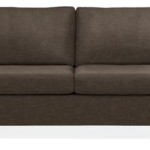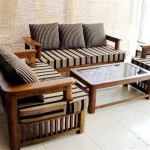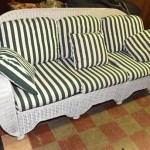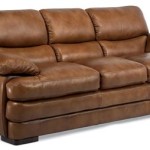What Color Goes With a Grey Sofa: A Comprehensive Guide
A grey sofa is a versatile and popular choice for modern living spaces. Its neutrality allows for a wide range of color palettes and design styles to be incorporated. The selection of complementary colors significantly impacts the overall aesthetic of a room, affecting its perceived mood and visual appeal. Understanding the nuances of color theory and how different hues interact with grey is crucial for creating a cohesive and stylish interior.
The perceived temperature of grey, whether warm or cool, also plays a role in color selection. Greys with undertones of beige, brown, or yellow are considered warm greys, while those with hints of blue, green, or purple are considered cool greys. Identifying the undertone of the sofa is the first step in determining an appropriate color scheme.
Understanding the Undertones of Your Grey Sofa
The term “grey” encompasses a vast spectrum of shades, each possessing unique undertones that subtly influence its visual characteristics. These undertones, often imperceptible at first glance, significantly impact the colors that harmonize effectively with the sofa. Properly discerning these undertones is paramount to achieving a balanced and aesthetically pleasing room design.
Warm greys, as mentioned earlier, often exhibit hints of beige, brown, or yellow. These subtle undertones create a sense of warmth and comfort. To identify a warm grey, compare it to a pure grey swatch. If it appears slightly less stark and more inviting, it likely has warm undertones. These sofas often pair well with other warm colors, creating a cozy and inviting atmosphere.
Cool greys, conversely, lean towards blue, green, or purple hues. These undertones evoke a sense of tranquility and sophistication. To identify a cool grey, compare it to a pure grey swatch. If it appears slightly more crisp and modern, it likely has cool undertones. Cool grey sofas typically complement cooler color palettes, resulting in a serene and contemporary aesthetic.
Once the undertone is identified, careful consideration must be given to the lighting within the room. Natural light can significantly alter the perceived color of the sofa and the surrounding elements. Artificial lighting, particularly incandescent or fluorescent bulbs, can further distort color perception. Testing paint swatches and fabric samples in different lighting conditions is recommended to ensure color compatibility.
Furthermore, the texture of the sofa fabric influences the perceived color. A smooth, matte fabric will reflect light differently than a textured, woven fabric. This variation in light reflection can subtly alter the appearance of the undertone. Taking the fabric texture into account will create a more harmonious blend of colors within the space.
Complementary Color Palettes for Grey Sofas
The selection of complementary colors hinges on the desired mood and aesthetic. A wide array of color palettes can be successfully implemented with a grey sofa, each creating a unique ambiance. Understanding the principles of color theory allows for a more informed and intentional approach to interior design.
For warm grey sofas, earth tones such as beige, brown, terracotta, and olive green are excellent choices. These colors enhance the natural warmth of the grey, creating a comfortable and inviting atmosphere. Accents of gold, copper, or brass can further amplify the warmth and add a touch of sophistication. Consider pairing a warm grey sofa with a terracotta-colored throw and brown leather cushions for a cohesive and earthy feel.
Alternatively, warm greys can be contrasted with pops of rich, saturated colors like deep teal, mustard yellow, or burnt orange. These colors provide a vibrant counterpoint to the neutrality of the grey, adding visual interest and personality to the space. Utilizing these colors in accent pieces such as artwork, cushions, or rugs can create a dynamic and engaging environment.
Cool grey sofas, on the other hand, often pair well with cool-toned blues, greens, and purples. These colors enhance the calming and sophisticated qualities of the grey, creating a serene and modern atmosphere. Silver or chrome accents further accentuate the coolness and create a sense of refined elegance. A cool grey sofa can be complemented with blue cushions, a green throw, and silver framed artwork.
Another option for cool grey sofas is to use a monochromatic color scheme, incorporating different shades of grey, white, and black. This creates a minimalist and sophisticated look that is both timeless and elegant. Adding texture through the use of different fabrics and materials can prevent the space from feeling flat or sterile. A cool grey sofa with white cushions and a black and white patterned rug exemplifies this style.
Furthermore, the addition of natural elements, such as wood furniture or plants, can soften the coolness of the grey and add a touch of warmth and organic appeal. The natural textures and colors of these elements create a balanced and inviting space. A wooden coffee table or a potted plant can significantly enhance the overall aesthetic.
Considerations Beyond Color: Texture, Pattern, and Lighting
While color is a dominant factor, successful integration of a grey sofa into a living space also requires careful consideration of texture, pattern, and lighting. These elements work in conjunction to create a cohesive and harmonious design. Ignoring these factors can result in a space that feels unbalanced or incomplete.
Texture plays a crucial role in adding depth and visual interest to a room. Pairing a smooth grey sofa with textured cushions, such as those made from velvet, linen, or faux fur, can create a tactile and visually appealing contrast. A textured rug, such as a shag rug or a jute rug, can further enhance the overall texture of the space. Mixing different textures prevents the room from feeling monotonous and adds a layer of sophistication.
Pattern can be used strategically to add personality and visual interest to the room. A patterned throw or cushions can introduce a focal point and tie together the various colors in the space. However, it is important to avoid overwhelming the room with too many patterns. Limiting the number of patterns and ensuring that they complement each other is crucial for achieving a balanced and harmonious design.
Lighting is perhaps the most critical element in interior design. The type and intensity of lighting can significantly impact the perceived colors and textures in the room. Natural light is ideal, but artificial lighting should be carefully planned to create the desired mood and ambiance. Layering different types of lighting, such as ambient lighting, task lighting, and accent lighting, can create a more dynamic and functional space. Table lamps, floor lamps, and recessed lighting can all be used to achieve the desired effect.
For instance, a room with a cool grey sofa may benefit from warm-toned lighting to counteract the coolness of the grey. Conversely, a room with a warm grey sofa may benefit from cool-toned lighting to balance the warmth. Experimenting with different types of light bulbs and dimmer switches can allow for customization and control over the lighting in the room.
In addition to these elements, the size and layout of the room should also be considered. A small room may benefit from lighter colors and minimalist decor to create a sense of spaciousness. A large room, on the other hand, can handle bolder colors and more elaborate decor. The furniture arrangement should also be carefully planned to maximize functionality and create a comfortable and inviting space.
Ultimately, the goal is to create a cohesive and personalized space that reflects the individual tastes and preferences of the occupants. A grey sofa provides a versatile foundation for a wide range of design styles, allowing for creativity and experimentation. By carefully considering the undertones of the sofa, the complementary color palettes, and the interplay of texture, pattern, and lighting, a stylish and harmonious living space can be achieved.
Remember that personal preference plays a significant role in design decisions. While guidelines and recommendations can provide a starting point, it is essential to trust one's own instincts and create a space that feels authentic and comfortable. Experimentation and a willingness to try new things are key to achieving a truly unique and personalized interior.

What Colours Go With A Grey Sofa Inspiration Furniture And Choice

What Colours Go With A Grey Sofa Inspiration Furniture And Choice

What Colours Go With Grey Sofa Read Our Expert Advice Aspect Wall Art

What Colour Sofa Goes With Grey Carpets Furniturebox

What Colours Go With A Grey Sofa Inspiration Furniture And Choice

15 Ways To Style A Grey Sofa In Your Home Décor Aid

17 Colours That Go With Grey Colour Scheme Ideas

What Colours Go With A Slate Grey Sofa Google Search Paint Colors For Living Room

25 Exquisite Gray Couch Ideas For Your Modern Living Room Decoist
What Color Wall Goes With A Gray Couch Quora
Related Posts








